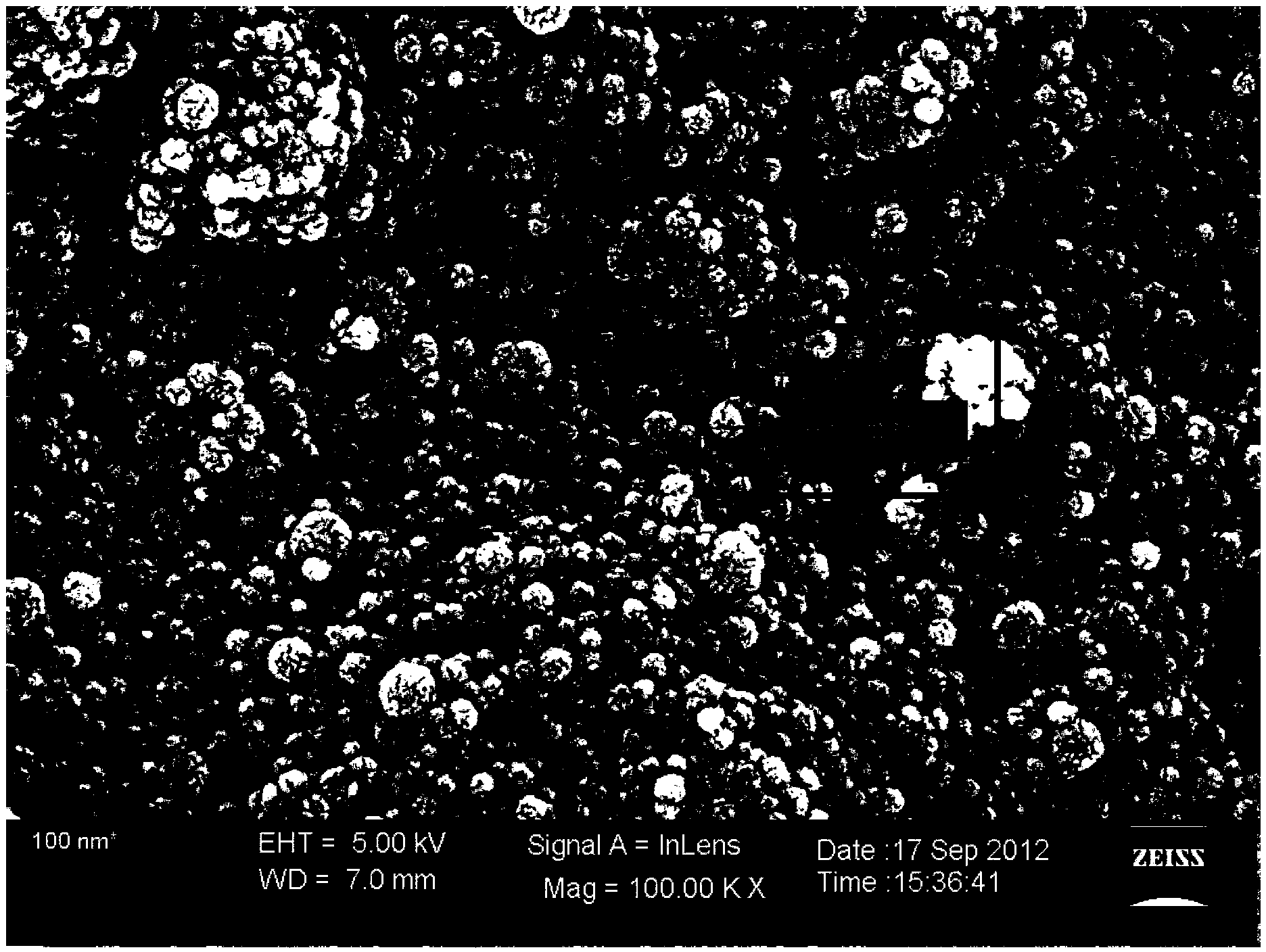Method for preparing small solid carbon ball and carbon ball prepared thereby
A small-scale, solid technology that can be used in carbon preparation/purification, nanotechnology for materials and surface science, nanotechnology, etc., and can solve problems such as low specific surface area, confinement of carbon spheres, etc.
- Summary
- Abstract
- Description
- Claims
- Application Information
AI Technical Summary
Problems solved by technology
Method used
Image
Examples
Embodiment 1
[0027] Add 6g of glucose and 45ml of deionized water into a 50ml beaker, stir to dissolve. Then add 1 g of polymeric ionic liquid PIL-a (shown in the structure below), and dissolve in the above glucose solution. The resulting solution was transferred to a reaction kettle, heated to 150°C, and reacted for 16 hours. After the reaction is finished, the product is washed with distilled water, then suction filtered, and the small-sized carbon spheres are obtained after drying. The scanning electron microscope image of the obtained carbon spheres is shown in figure 1 and figure 2 shown. According to the results of electron microscopy, the size of carbon spheres is in the range of 30-55nm. figure 2 The distance between the two straight lines in is 32.33 nm, which is the diameter of one of the representative carbon spheres prepared.
[0028] The preparation steps of PIL-a are as follows: monomer 1-vinyl-3-propyl imidazole chloride 8g, free radical initiator azobisisobutyronitri...
Embodiment 2
[0031] Add 10g of sucrose and 50ml of deionized water into a 50ml beaker, stir to dissolve. Then add 1 g of polymeric ionic liquid PIL-b (shown in the structure below), and dissolve in the above sucrose solution.
[0032]
[0033] The resulting solution was transferred to a reaction kettle, heated to 230 degrees, and reacted for 32 hours. After the reaction is finished, the product is washed with distilled water, then suction filtered, and the small-sized carbon spheres are obtained after drying. The size of the carbon spheres was analyzed from the electron microscope results in the range of 34-66nm.
Embodiment 3
[0035] Add 6g of glucose and 45ml of deionized water into a 50ml beaker, stir to dissolve. Then 1 g of polymeric ionic liquid PIL-b (same as Example 2) was added and dissolved in the above glucose solution. The resulting solution was transferred to a reaction kettle, heated to 150°C, and reacted for 24 hours. After the reaction is finished, the product is washed with distilled water, then suction filtered, and the small-sized carbon spheres are obtained after drying. The size of the carbon spheres was analyzed from the electron microscope results in the range of 45-64nm. The low-temperature nitrogen adsorption test shows that the BET specific surface area of the obtained small-sized carbon spheres can reach 129m 2 / g, see below image 3 .
PUM
| Property | Measurement | Unit |
|---|---|---|
| concentration | aaaaa | aaaaa |
| diameter | aaaaa | aaaaa |
| specific surface area | aaaaa | aaaaa |
Abstract
Description
Claims
Application Information
 Login to View More
Login to View More - R&D
- Intellectual Property
- Life Sciences
- Materials
- Tech Scout
- Unparalleled Data Quality
- Higher Quality Content
- 60% Fewer Hallucinations
Browse by: Latest US Patents, China's latest patents, Technical Efficacy Thesaurus, Application Domain, Technology Topic, Popular Technical Reports.
© 2025 PatSnap. All rights reserved.Legal|Privacy policy|Modern Slavery Act Transparency Statement|Sitemap|About US| Contact US: help@patsnap.com



